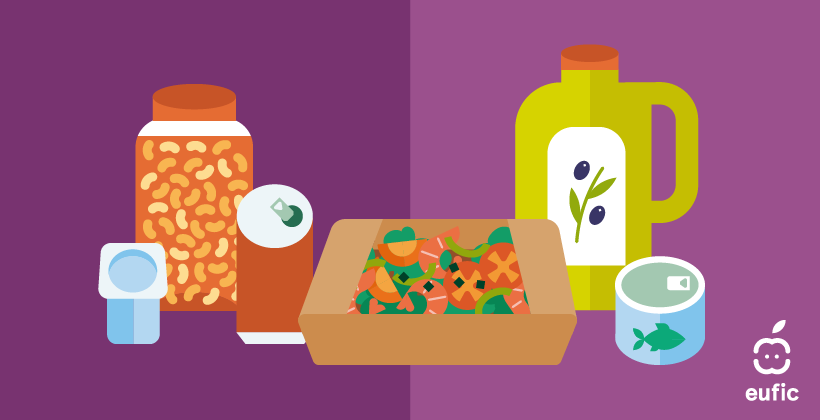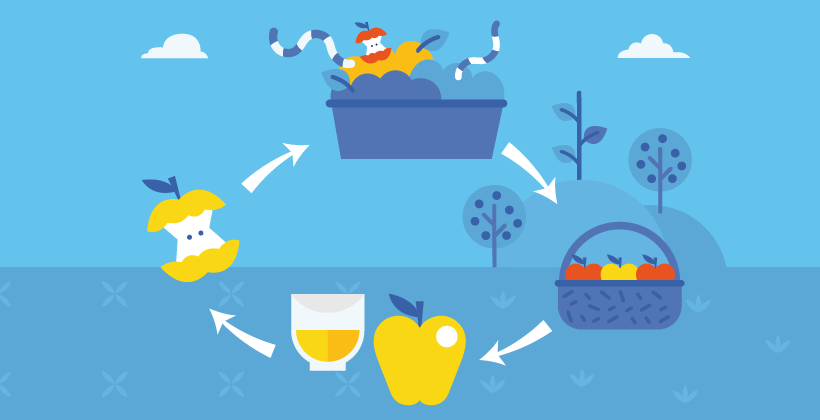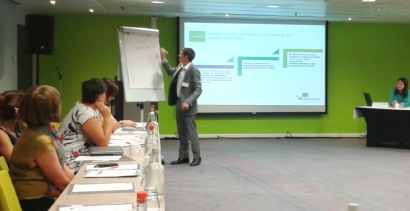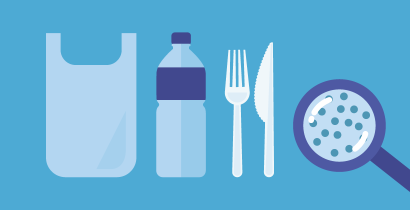Plastics – How can it become more sustainable?
Last Updated : 31 March 2020Plastics are useful materials that offer both challenges and opportunities. Disposal of traditional plastics can be challenging, while better recycling and new biodegradable plastics are providing opportunities to reduce these disadvantages.
Plastics are all around us, in all kinds of shapes and with all kinds of properties and purposes. Even though “plastic” is often used as a universal name, there are many different plastics. They can be made from different source materials, such as crude oil, gas, sugar cane, starch, or even minerals.
There are two main types of plastics:
- Thermoplastics melt when they are heated and harden when they are cooled. This process can be repeated, so that the plastic can be remoulded.
- Thermosets also melt when heated, but their structure changes in the process. Once the material cools down and hardens, it cannot be remoulded again
With their diverse properties, plastics can be used in many ways. One of the main ones is packaging, as plastic has good barrier properties to protect its contents from air and moisture, is lightweight and can be flexible and transparent. In 2018, 39.9% of plastics in Europe were used for packaging.1
However, disposal of plastic waste can be a challenge.
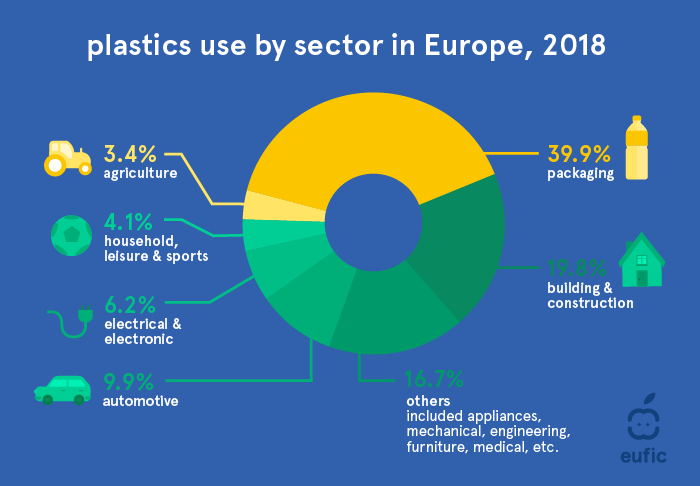
Fig.1: Plastics have all kinds of different applications, but packaging is the sector that uses the most1
Plastic Impact - What are the environmental disadvantages of plastic packaging?
Many pieces of plastic packaging are thrown away after a single use, hence they are called single-use plastics. While some of them can be recycled, many cannot. This does not only create an ever-increasing demand for raw materials and energy, but it is also a burden on the environment, as large quantities of plastic waste leak into the environment. Globally, between 5 and 14 million tonnes of plastic, which is 1.5 – 4% of global plastics production, end up in the oceans each year, where they can persist for hundreds of years.2
Correct disposal of plastics is therefore crucial. However, the rules for correct plastic disposal can feel complicated, especially because different countries and even municipalities have different regulations for recycling. Yet, as sustainability has become a popular topic, there is a certain pressure to master the recycling challenge.
How is plastic food packaging recycled?
The first step of plastic treatment starts at home, when we divide our trash into recycling, paper, organic and others, depending on the local regulations. This pre-sorting makes it possible for machines in the waste treatment facilities to manage the amount of different materials.
Once delivered to the recycling facility, general plastic waste still consists of different types of plastics that have different characteristics and can not necessarily be mixed. Sorting of the plastics can be carried out in several steps:
- A magnet separates metal from plastic (often disposed of together in household recycling)
- Several sieves or rolling drums sort the plastic pieces by size
- Air separators or sinking baths sort the plastic by thickness and weight
- Infrared scanners sort the material by types of plastics
- A manual control by workers ensures that the plastic pieces have been sorted correctly
Once the plastics that can be recycled are identified, they are shipped to a recycling plant, where the plastic undergoes another series of steps:
- The plastic is shredded into small flakes of approximately the same size
- The flakes are cleaned from residuals like food waste or paper
- Machines with light sensors sort the material by colour
- The sorted plastic flakes are melted and remoulded into pellets of the respective colour and plastic type
- These plastic pellets can then be used to produce new products
However, there are different kinds of recycling. The method described above is called primary recycling; the material is mechanically reprocessed into a product with similar properties. The material could, however, also be reprocessed into product with different properties (secondary recycling, also called downcycling) or deconstructed into the chemical constituents (tertiary recycling). The fourth option is incineration for energy recovery (quaternary recycling).3
Limits to recycling - Can all plastics be recycled?
In a circular economy, primary recycling would be the norm, so that the material from one product could be used to produce the same or similar product again. The reality is however still quite far away from this ideal - in the EU, only 42% of plastic waste is recycled, while the rest is incinerated for energy recovery or sent to landfill.4 There are different reasons why the plastic is not, or cannot be recycled:5,6
- Different types of plastics have been mixed during production and they can neither be separated nor recycled as a mixture
- Thermosets cannot (yet) be primary recycled
- Chemical additives have been added to the plastic, which make the recycling process more complicated
- It is too expensive to sort the plastic to the desired grade of purity
- There is no recycling plant nearby
- The plastic is shipped to non-EU countries with less strict waste treatment laws
Plastics can also not yet be recycled endlessly, so virgin material must be added in every recycling circle for the resulting plastic to remain coherent with quality standards. Because of the loss of quality the recycled plastic pieces are removed from the process after a few recycling cycles.
Another issue with recycling of different materials are the costs of transport, both monetary and environmental, as there is only a certain number of recycling plants, which are all rather specialized.
Recyclability is also not always a priority for packaging manufacturers - flexibility, stability and hygiene might be the preferred properties. Often, these properties are achieved with material mixes, layers or additives that cannot be recycled yet.
Alternatives to plastic food packaging - Sustainable packaging solutions for food
In some cases, paper, glass and metal can be used as alternatives to plastics. These materials can all be recycled with a certain degree of success, but also have other limitations. Glass bottles for example have good barrier properties and can be recycled effectively but are also heavy and therefore require more fuel for transport.
Therefore, single use plastics are hard to avoid in some areas, especially for hygienic food and medical packaging. In order to minimize the environmental impact of necessary single use plastics, biodegradable and compostable plastics are being explored as possible solutions. They can offer the convenience of single use plastics, while at the same time avoiding emissions from incineration.
How does biodegradable plastic work?
Plastics are called biodegradable, if they can safely and quickly be broken down into harmless components by naturally occurring microorganisms. However, there is no official timeframe of how fast biodegradable plastics need to be broken down after disposal.
However, to be defined as compostable, materials need to be valuable to the microorganisms that break them down. While all compostable materials are biodegradable, not all biodegradable materials are compostable. The ‘humus’, which is the organic material that is created by the microbes in soil during the composting process, is full of nutrients that are beneficial to plants. Materials labelled as compostable must also have low levels of heavy metals and other materials that could have adverse effects on the compost composition.7
Both processes can happen naturally or under industrially improved conditions. Especially biodegradable plastics often require industrial treatment and would take a very long time to degrade in a backyard compost.
References
- PlasticEurope (2019). Plastics - the Facts 2019: An analysis of European plastics production, demand and waste data
- Jambeck et al (2015). Plastic waste inputs from land into the ocean. Science
- Jefferson Hopewell, Robert Dvorak and Edward Kosior (2009). Plastics recycling: challenges and opportunities. Royal Society
- Eurostat statistics (2017). Accessed 12.02.2020
- European Commission (2018). A European strategy for plastics in a circular economy.
- Dixon (2011). Packaging materials: 9. Multilayer packaging for food and beverages. International Life Sciences Institute (ILSI)
- British Plastics Federation. Packaging waste directive and standards for compostability (EN 13432). Accessed 12.02.2020
